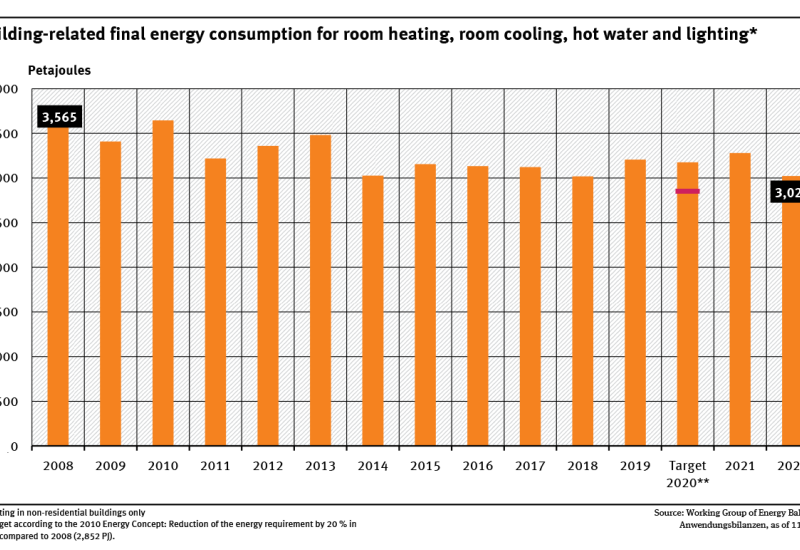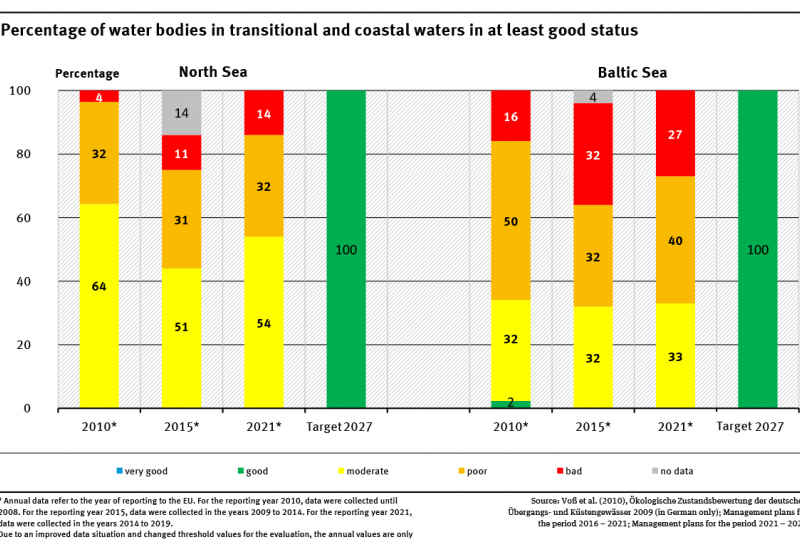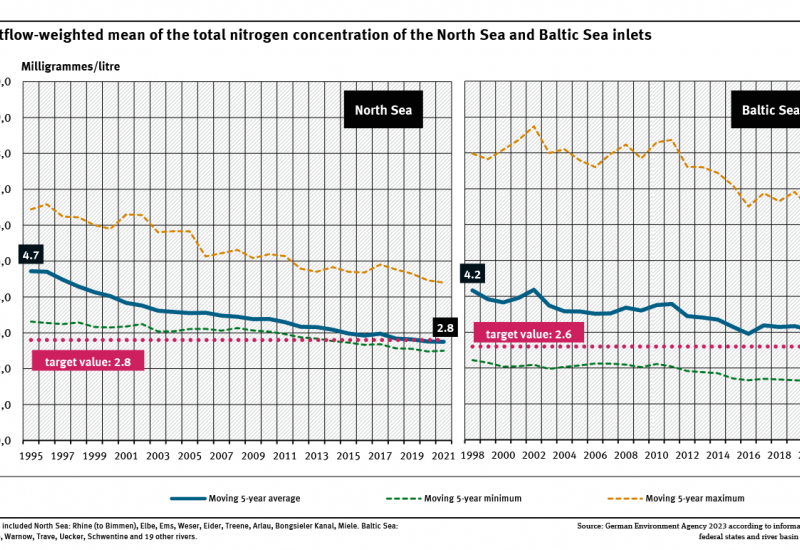Final energy consumption associated with buildings decreased by 15.2 % between 2008 and 2022.However, according to the 2010 Energy Concept, the heat demand of buildings should have decreased by 20 % between 2008 and 2020. In fact, consumption fell by only 10.9 %.Due to the Russian war of aggression against Ukraine and the subsequent efforts to save energy in Germany, final ener... read more
Your search for "energy transition" resulted in 36 hits:
Indicator: Primary energy consumption
Primary energy consumption (PEC) in Germany has fallen significantly since the end of the 2000s. It fell by 25 % between 2008 and 2023.According to the Energy Efficiency Act of 2023, PEC is to be reduced by 39% by 2030 compared to 2008.The 'Projection Report 2023' by the German Environment Agency indicates that the measures taken so far will likely be insufficient to achieve these targets.The ... read more
Indicator: Ecological status of transitional and coastal waters
In 2021 no water body of transitional or coastal waters in the North and Baltic Seas achieved good or very good status.According to the European Water Framework Directive, by 2015 and with a deadline extension to 2027 all waters should have achieved at least a good ecological status.The time must now be used to reach the ambitious targets by 2027 at the latest.This will require considerable ad... read more
Indicator: Eutrophication of the North Sea/Baltic Sea by nitrogen
To achieve the objectives for the protection of the marine environment, Germany has committed to comply with maximum concentrations of nitrogen at estuaries.On average for all rivers, these target concentrations are already met for the North Sea, but still exceeded for the Baltic Sea.Some of the North Sea and Baltic Sea tributaries still have very high concentrations.In order to fulfil the obj... read more
Indicator: Bathing water quality
All bathing waters in the EU were supposed to be of at least sufficient quality by 2015.97.9 % of inland bathing waters had excellent water quality in 2023. With that the target has been missed only slightly.Considering only those bathing waters that were explicitly assessed, 99.7 % of the bathing waters met the requirements in 2023.About 91 % of inland waters and almost 88 % of coastal bathin... read more
Indicator: River eutrophication by phosphorus
Too high phosphorus concentrations are measured at more than half of all river measurement stations in Germany.The share has declined by around one third since the beginning of the 1980s. Extreme levels of pollution are very rare nowadays.Aim of the Sustainability Strategy is to meet the requirements for good status for phosphorous in all water bodies by 2030 at the latest.This requires a chan... read more
Indicator: Commitment to environmental protection
In the 2022 representative survey, 17 % said they were actively involved in environmental protection and nature conservation. In 2020, the figure was 19 % and in 2018 and 2016 12 % and 6 %.The indicator shows that the positive trend of previous years has not continued.Considering the single-digit percentages for active engagement from 2006 to 2014, the 17 % from 2022 represents a relatively la... read more








